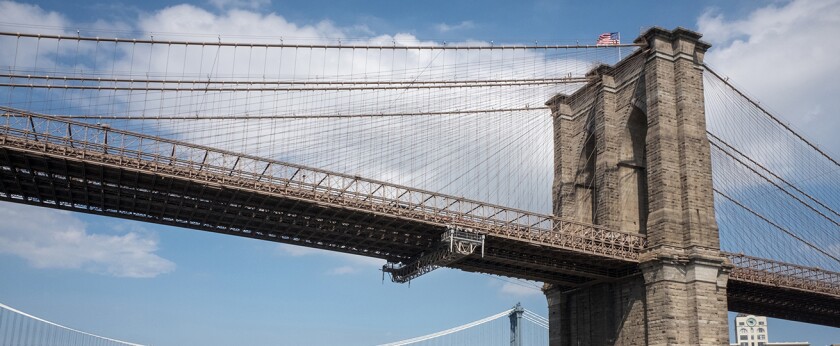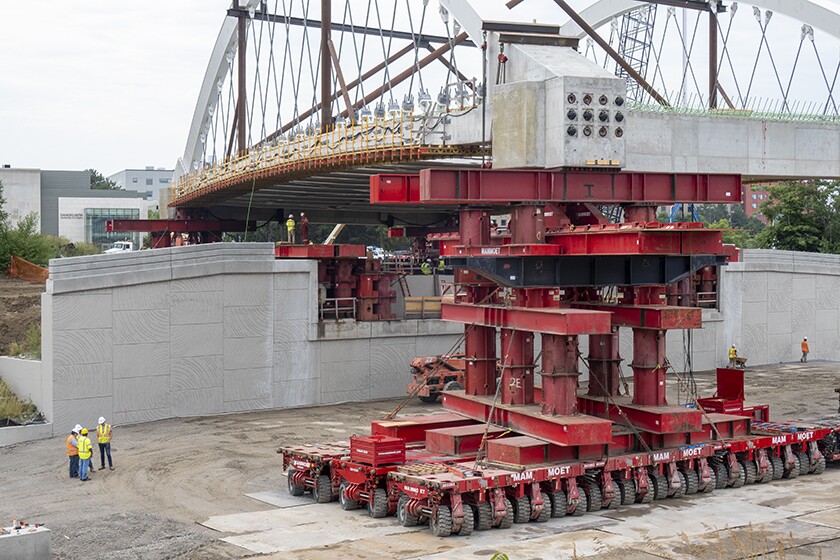In Brief:
There could soon be a new way to cross the Mississippi River.
After years of discussion, the Louisiana Department of Transportation and Development (DOTD) is pushing ahead with a plan to build a new bridge across the river near the state capital of Baton Rouge. Planners and advocates say it could help alleviate congestion in the city, redirect some local traffic off of Interstate 10 and provide “redundancy” in the regional transportation network that’s important during road closures or disasters.
Carrying out a project of that scale requires careful planning and lots of time and money. The state created a taxing district to help finance the bridge in 2018, and has set aside $300 million to pay for it so far. But the overall cost of the project is likely to reach at least $3 billion. And infrastructure projects of all types are seeing increased labor and material costs in the wake of the COVID-19 pandemic. It’s never been easy to build a bridge, but new challenges, as well as new federal funding opportunities, make it even more important to get the logistics right, planners say.
“You’re making a generational decision,” says J.H. Campbell, chair of the Capital Area Road and Bridge District. “A bridge is going to be there for generations.”
Why It’s Needed
Other river crossings in the Baton Rouge area include the Huey P. Long Bridge, which opened in 1940, and the Horace Wilkinson Bridge, which opened in 1968 and carries Interstate 10. In 2011, the Louisiana DOTD opened the John James Audubon Bridge, replacing a ferry system that carried 35 cars at a time, 16 hours a day. The new proposed bridge — nicknamed MR Bridge South — would connect Louisiana state routes 1 and 30. It’s the largest active project on the DOTD’s megaprojects list, Vaught says.
The state spent around $3.5 million on its contract with Atlas Technical so far, according to Vaught. Working with the department, the Bridge District, community leaders, river pilots and other stakeholders like the U.S. Army Corps of Engineers, the group narrowed the possible bridge locations down to 10 and later to three. The state is expected to select a final location this year. Then it will begin detailed environmental study and financing.
“We’ve been almost painstakingly deliberate in our approach to get to where we are today,” Vaught says. “Anytime you do projects of this nature, somebody’s not going to be happy about the final decision that’s made. So we want to make sure we have good data to support why we did what we did.”
The Question of Tolling
Most of the funding for the project is likely to come from the federal government, which provides an 80 percent match to state funds for selected highway infrastructure projects like a new bridge. In this case, the state may put up a larger share since it’s a high-priority project, Vaught says. It’s likely to still need a toll to get the financing complete, something which has been controversial in other parts of the state.
A state legislative committee rejected a plan last year to pay for a separate bridge replacement in Lake Charles, La., with a tolled bridge. That bridge, in Calcasieu Parish, has been toll free for decades and trucking groups objected to the introduction of tolls. The state later struck a deal to finance the project with lower tolls than originally proposed.
“Louisiana has had a love/hate relationship with tolling,” says Campbell. “Everybody says ‘Tolls are great, but don’t charge me.’”
Vaught says the dynamic in the area where the new Mississippi River bridge is planned is different. Drivers aren’t accustomed to crossing the bridge for free because it doesn’t exist yet, and it’s less likely to be used heavily for truck shipping. In the modern era of infrastructure building and maintenance, reliable financing is more important than ever.
“Everything comes down to sustainable funding, and unfortunately for much of our infrastructure, funding is based on legislative decision-making and policymaking, so it ebbs and flows,” says Marsia Geldert-Murphey, president of the American Society of Civil Engineers. “That’s really difficult for suppliers and contractors and engineers to anticipate: Is the funding still going to be there in five or 10 years?”
A Bigger Network
State departments of transportation tend to focus on the road-building side of the business. A memo sent by the Biden administration’s Federal Highway Administration in 2021, which encouraged states to spend federal funds on maintaining roads before building new ones, prompted a backlash among some DOTs. Critics maintain that adding new roads and lanes ultimately doesn’t do much to alleviate traffic, because it induces more demand for those roads over time. In the case of the new MR Bridge South, Vaught says, that’s actually part of the point; the state hopes that the new bridge will lead to more development nearby. “We know just anecdotally that if you build it they will come,” Vaught says.
Baton Rouge has other mobility and development needs too.
“We do have a congestion problem for sure — it’s outsized for a city of our population,” says Jessica McKelvie Kemp, vice president at the Center for Planning Excellence in Baton Rouge. “But what we don’t have is a proactive plan for addressing sprawl and coordinating land use with transportation investments.”
Kemp says she hopes the project will spark wider thinking about how the region’s transportation network can be made to work better, and for more people. For now, the state is pushing full steam ahead with the new bridge project. Campbell says he’s pleased that the Bridge District Commission and the state have managed to keep the project moving along the timeline so far. The project was begun in earnest under former Gov. John Bel Edwards, a Democrat, but Louisiana’s newly elected governor, Republican Jeff Landry, has said he’s committed to the new bridge as well.
The state predicts the earliest the new project could be complete is 2031. The next step is picking the final location.
“Then I would bet there’s going to be a lot of real estate deals made where people are trying to locate, and others will be frustrated,” Campbell says. “There’s gonna be winners and losers in any decision you make.”
Related Articles













